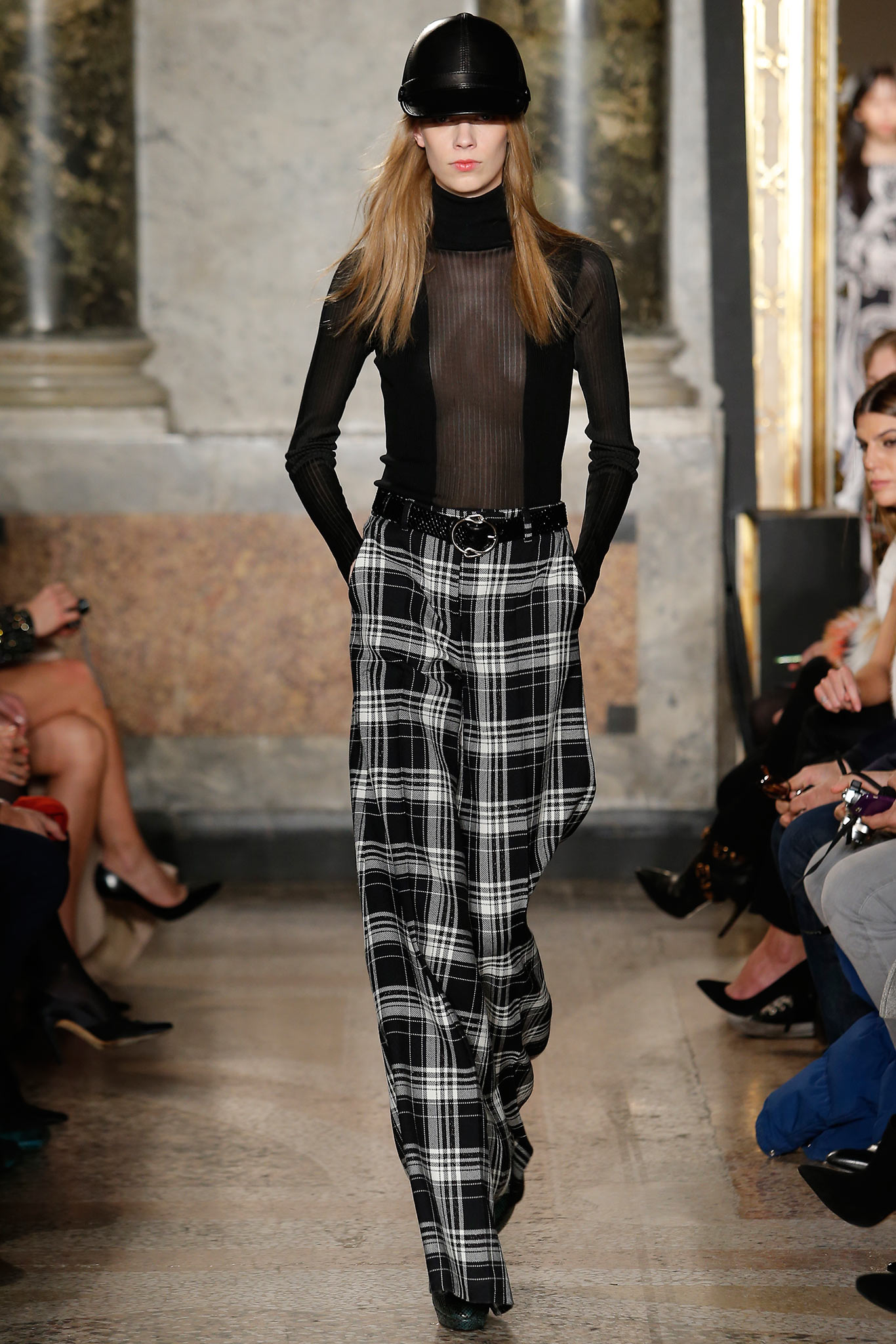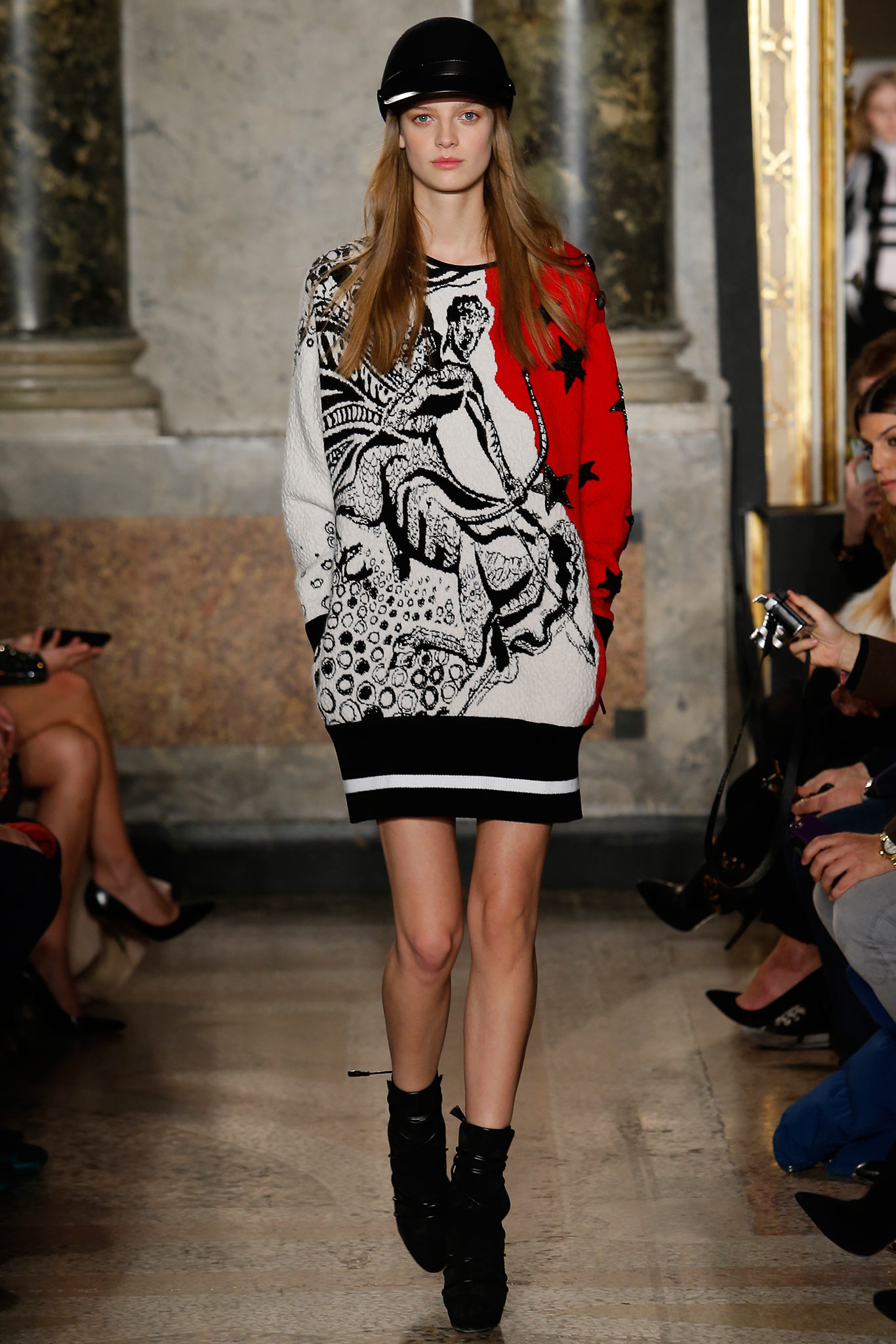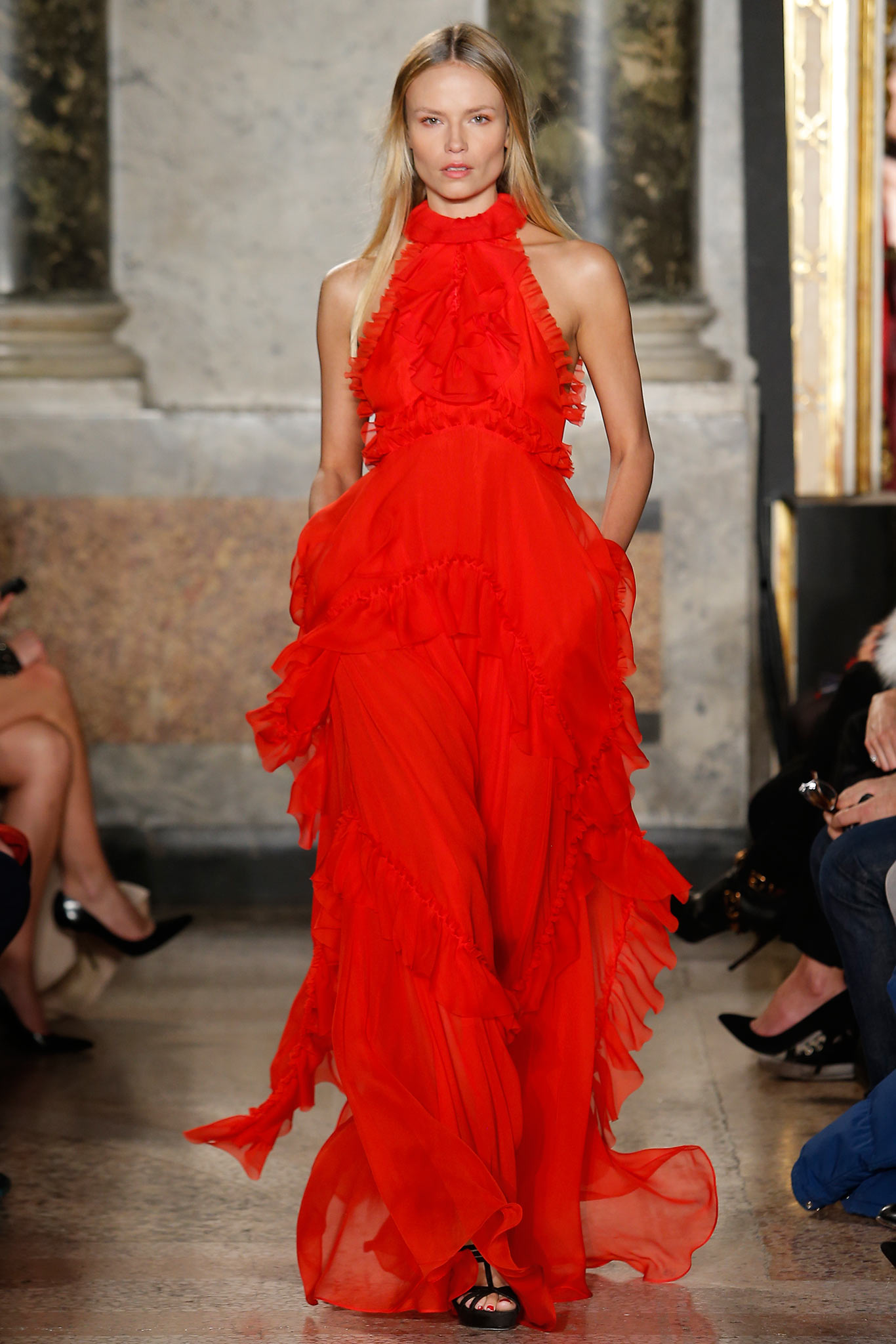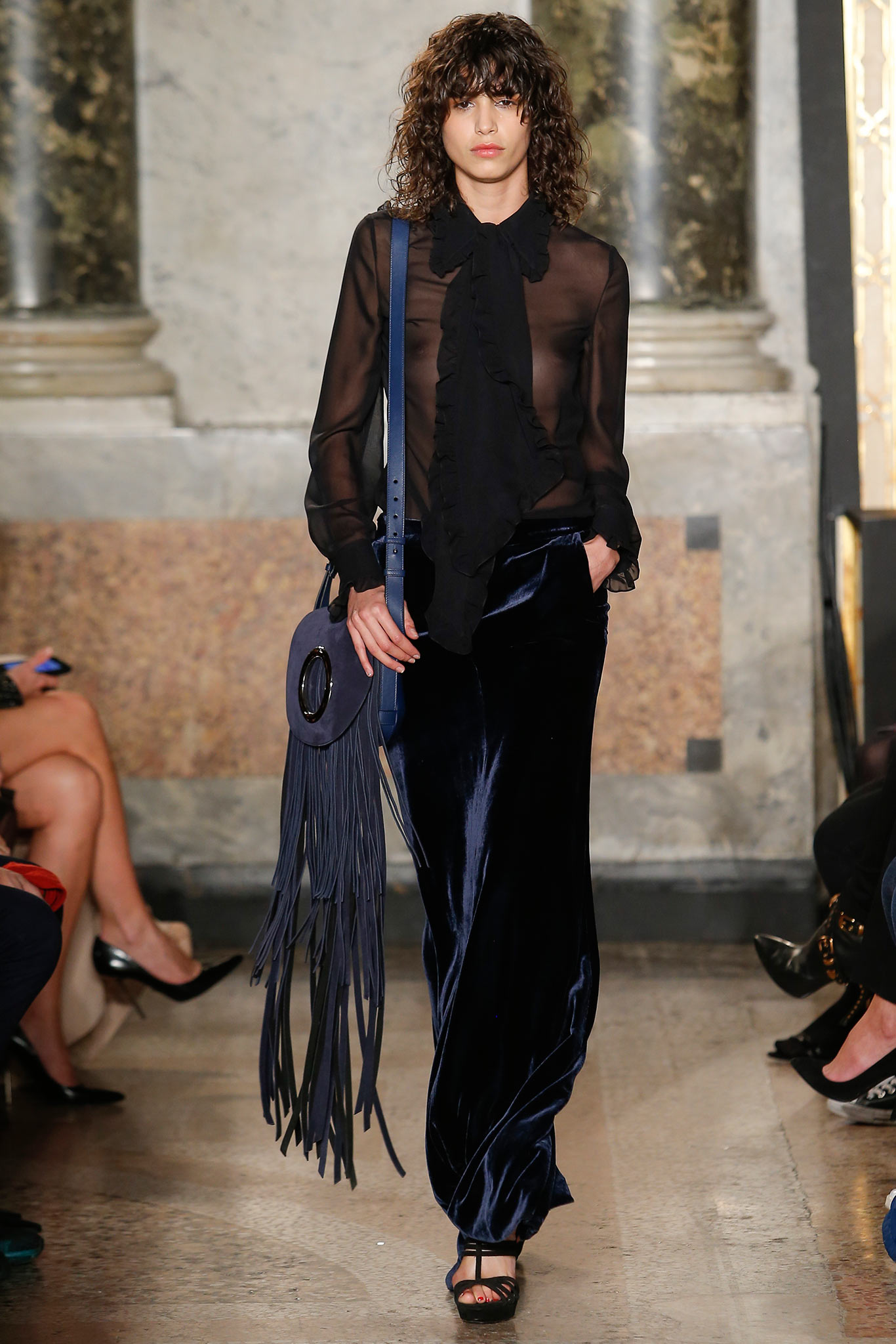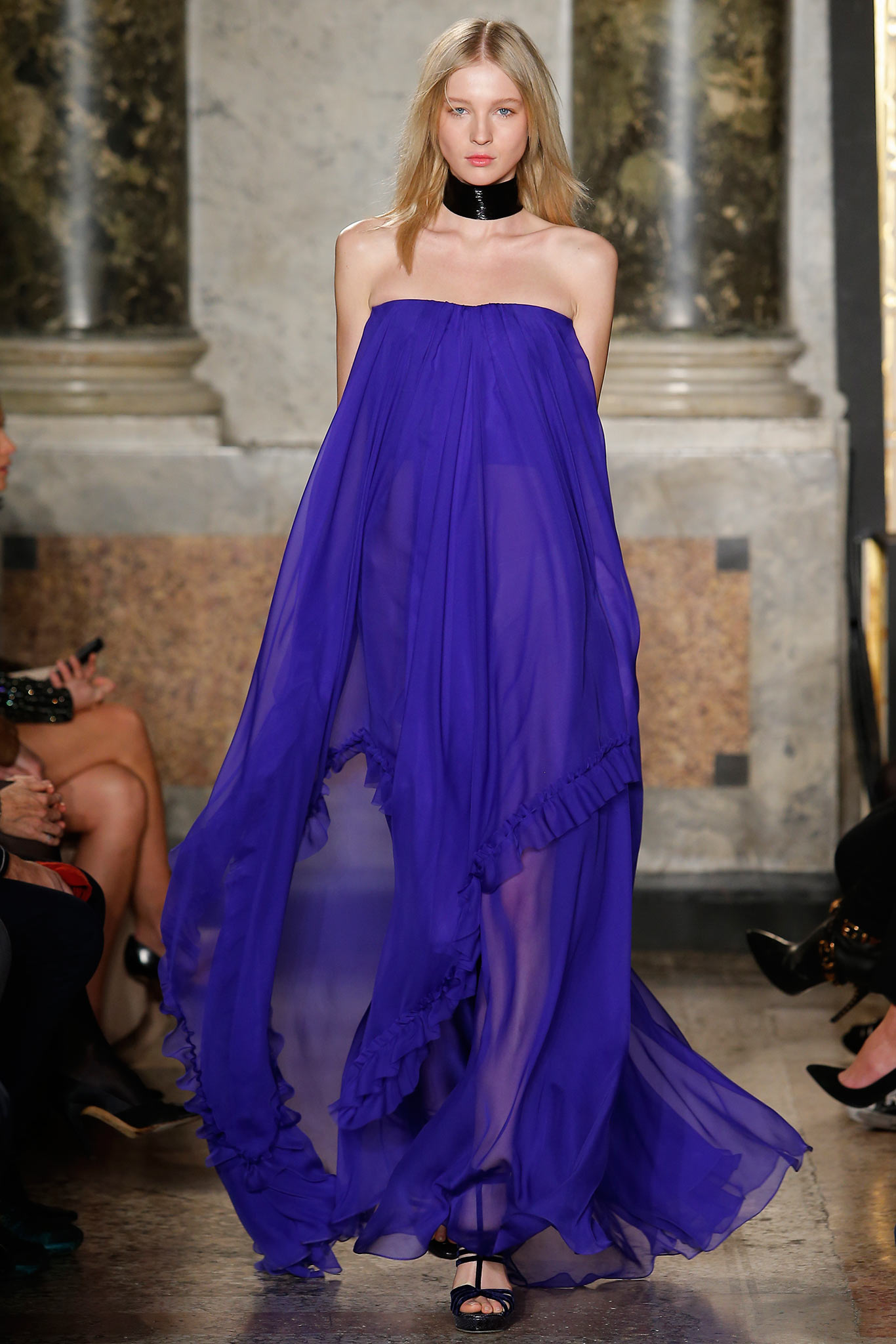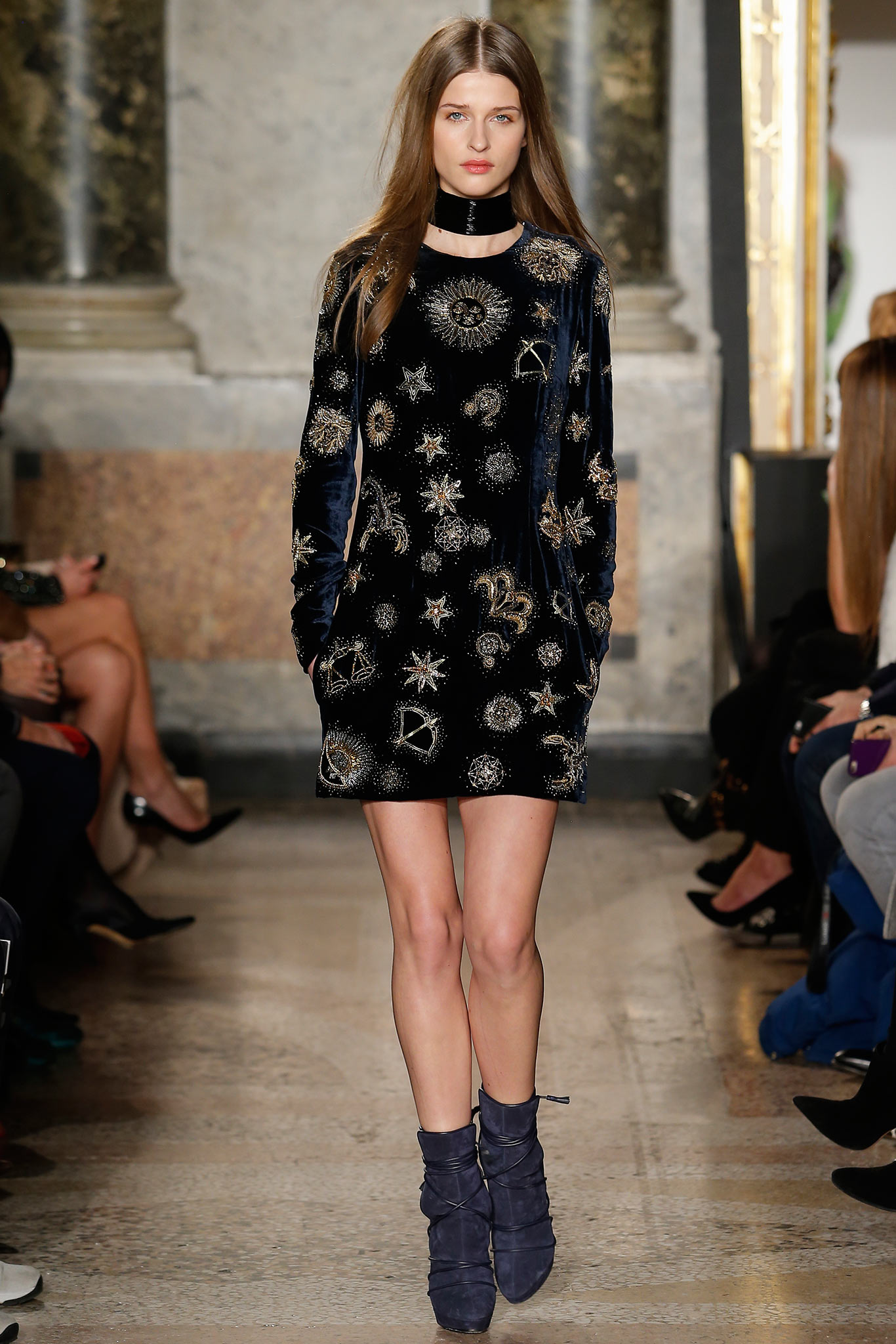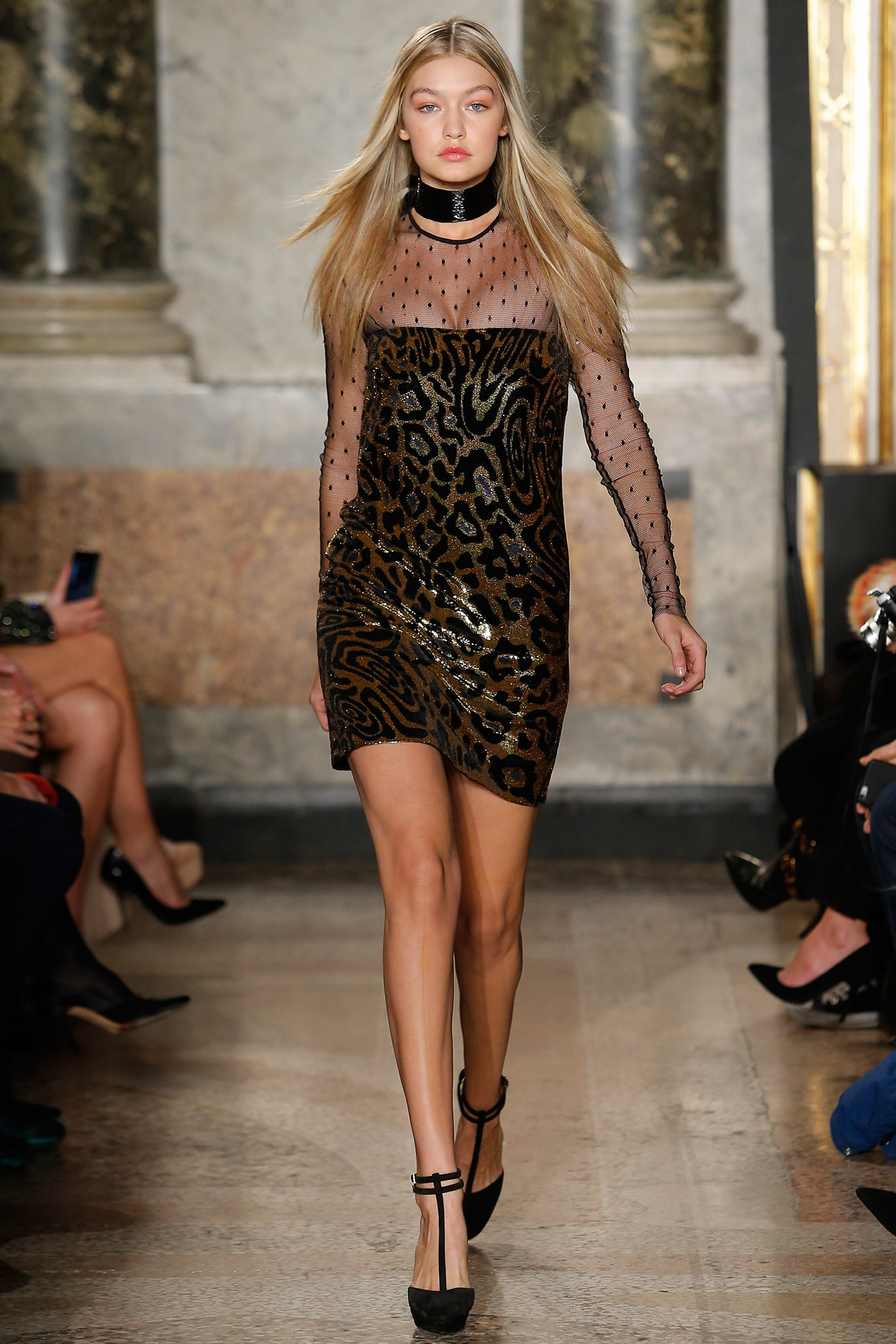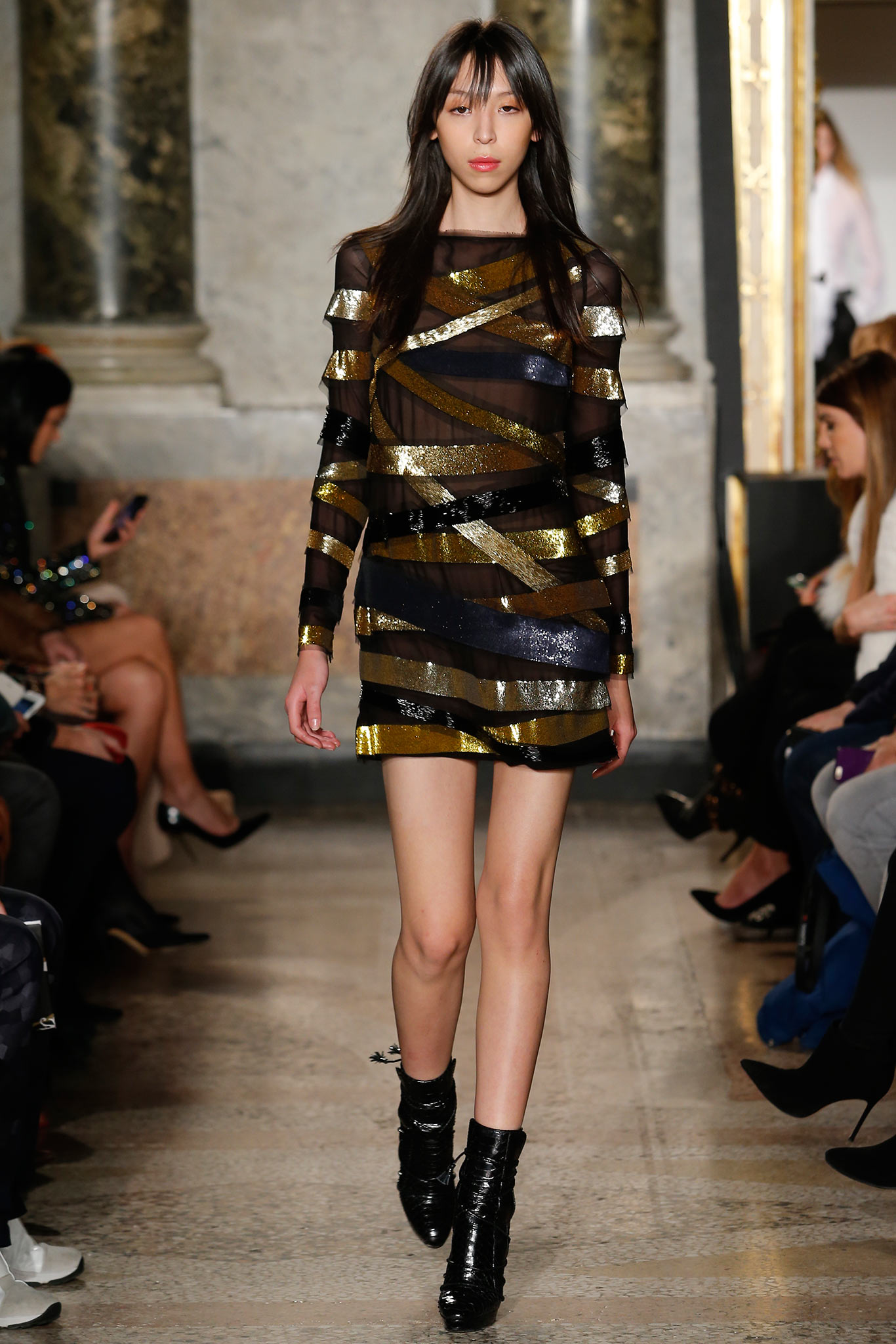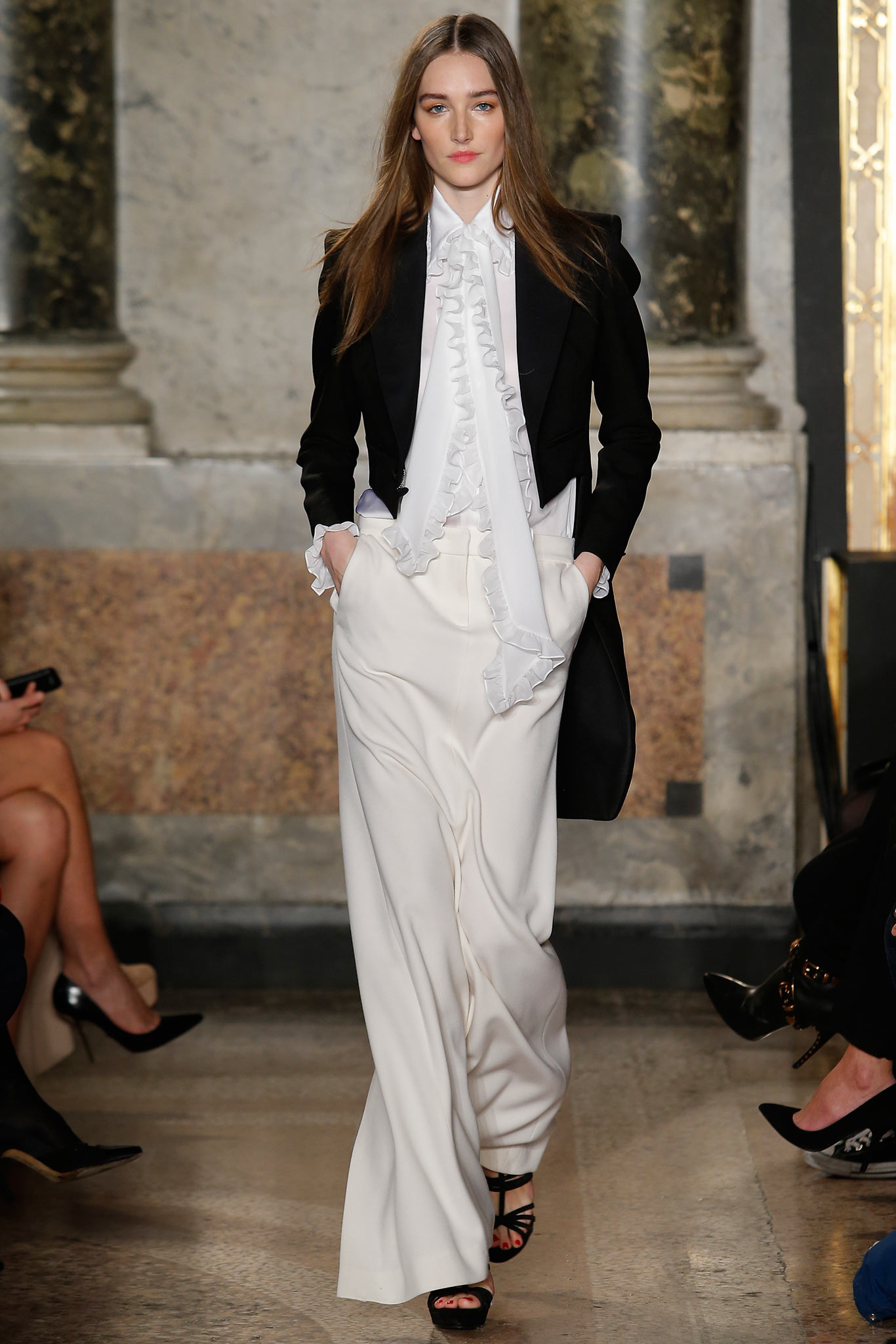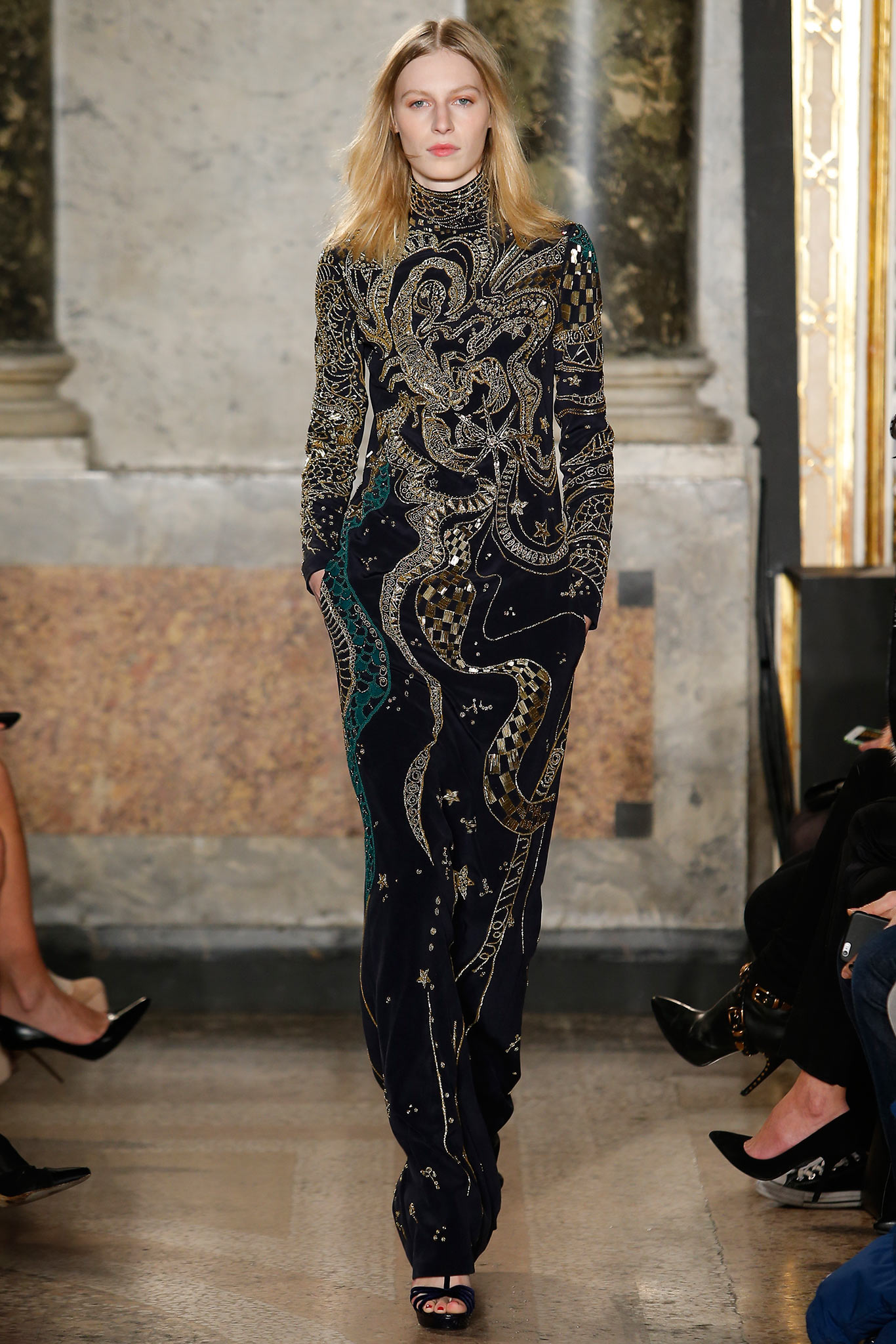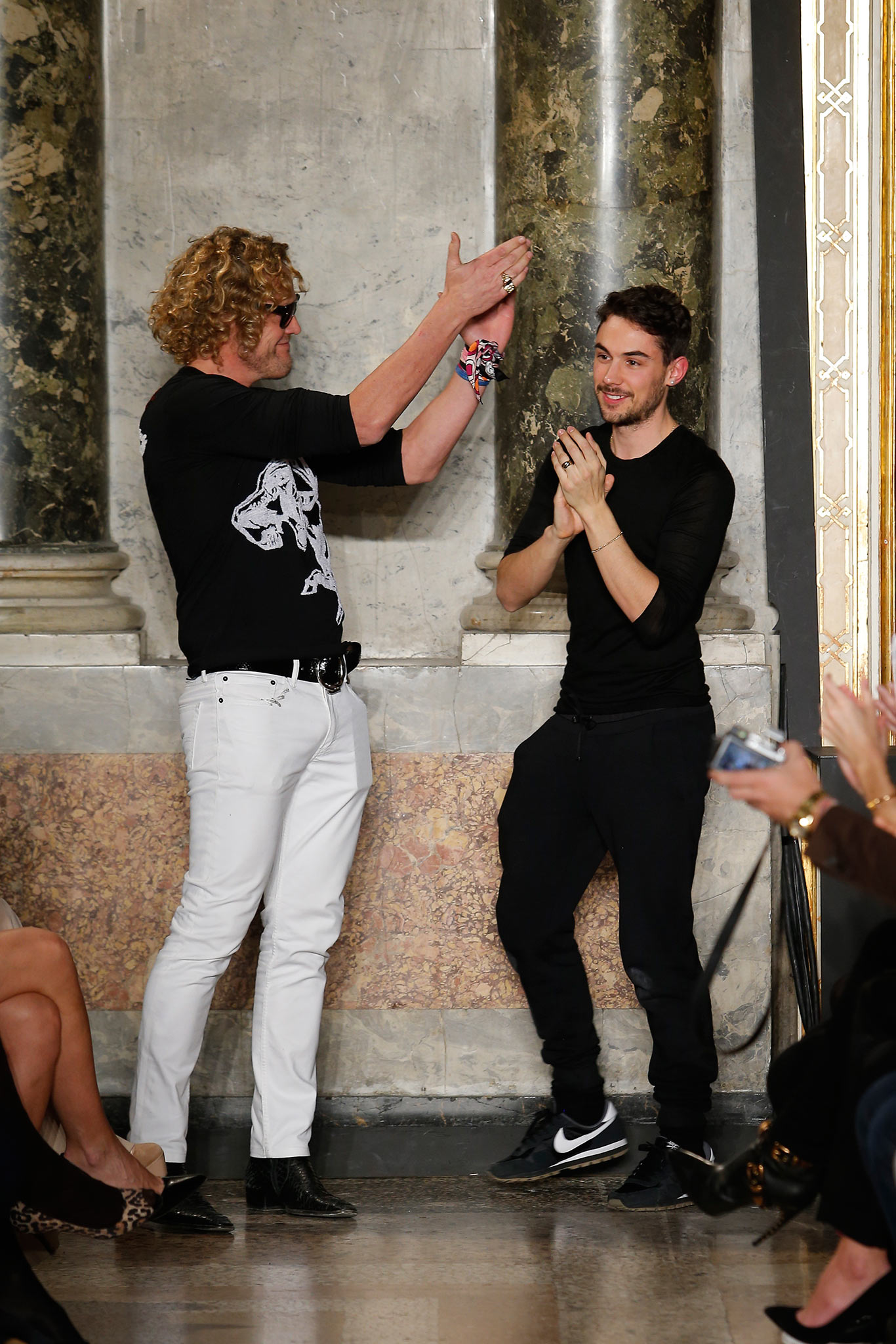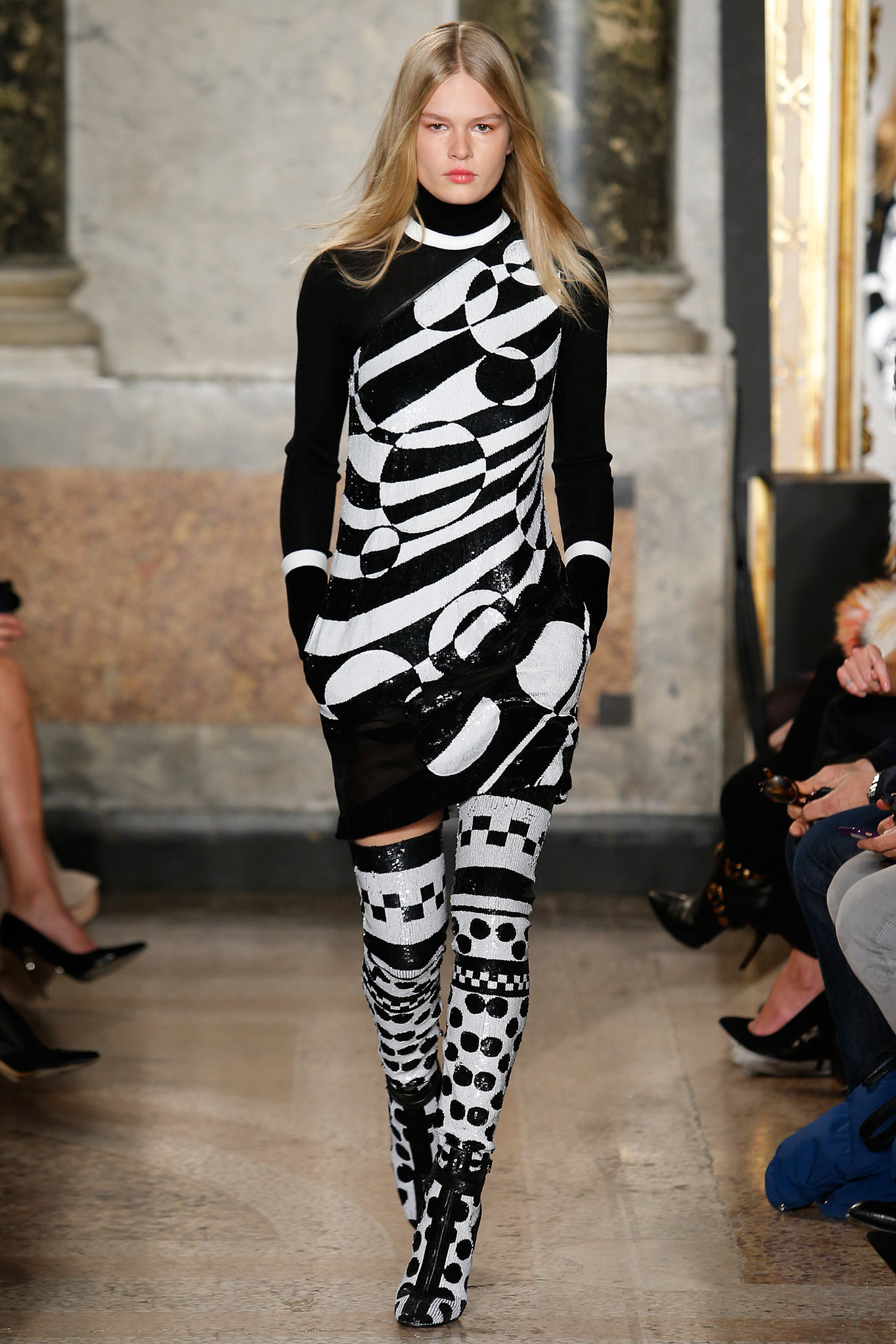
EMILIO PUCCI AUTUMN/WINTER 2015-16 READY-TO-WEAR MILAN FASHION WEEK
It was all but official before the show began. This would be Peter Dundas’ last collection for Emilio Pucci. The reasons still aren’t clear, but if we had to guess, it’s because Dundas’ Pucci is more hot-blooded than blue-blooded. Pucci, the brand, was born on the island of Capri in the 1940s, and came to global prominence in the ’60s, when the jet set first impressed itself on the world at large. Dundas, who hailed from Roberto Cavalli (and, according to rumor, may be headed back there), didn’t necessarily break with Pucci’s past, but he had a vision of his own for the brand. His work for the label was unapologetically sexy, and he was in love with rock ‘n’ roll from his bold Fall ’09 beginning right on through to tonight, when Led Zeppelin dominated the soundtrack and a whole lot of legs ruled the catwalk.
“It’s a very personal collection,” Dundas pointed out in a preview. The sporty horizontal stripes on clingy ribbed knits were apparently a reference to the rowing league he belongs to in Florence. The fluttery white and black evening separates were a loving tribute to his mother, a violinist who wore the colors when she performed. Here and there, you could spot callbacks to former hits, like an ombré-dyed body-con minidress or electric-hued crushed-velvet trousers and an equally bright silk blouse. As for the astrology motifs running through the collection, does it get more personal than star signs? They turned up everywhere, from intarsia sweaterdresses to delicate beaded embroideries on a velvet blazer and a floor-scraping cape. For the finale, Dundas sent out his favorite models in long jersey T-shirt dresses, each with their own zodiac sign: Cancer for Anja Rubik, Leo for Joan Smalls, Aquarius for Lily Donaldson. The illustrations were sweeping, strong, and emotional; Dundas also pointed out they were rendered by hand, as Emilio Pucci himself used to do.
He invited his studio team out to take their final bow with him. It was a lovely, tender gesture. Dundas’ tenure at Pucci lasted six years, double that of his predecessor. He made the show one of Milan’s hottest tickets and dressed show business’ best bodies (Gwyneth, Beyoncé, and Rihanna included), in the process giving the Pucci legacy a fresh relevance—and he did it all with dashing good humor and charm. Personnel change every few years is now the norm, not the exception, at fashion houses, and whoever follows Dundas in the creative director role will likely take the label in a new direction, but no one will deny that, for much of his time here, he was a star turn.




